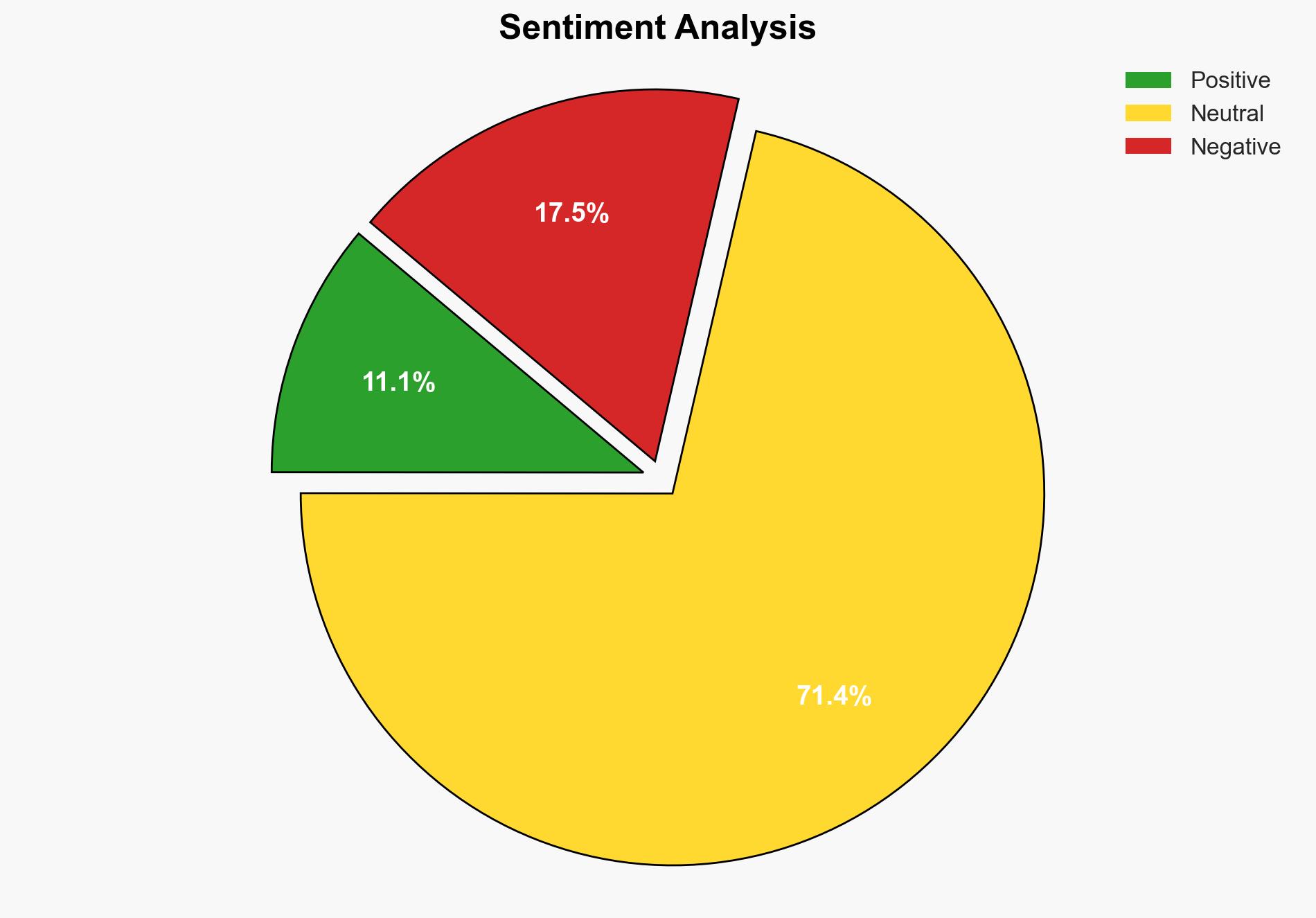New York law would ban civilians from weaponizing robots – Popular Science
Published on: 2025-03-14
Intelligence Report: New York law would ban civilians from weaponizing robots – Popular Science
1. BLUF (Bottom Line Up Front)
A proposed bill in New York aims to prohibit civilians from weaponizing robots and drones. This legislation, known as the Responsible Robotic Act, seeks to address public safety concerns and ethical issues associated with the increasing use of autonomous and semi-autonomous technology in law enforcement and civilian contexts. The bill is a response to public backlash against weaponized robots, as seen in social media videos, and aims to prevent potential harm and misuse of technology.
2. Detailed Analysis
The following structured analytic techniques have been applied for this analysis:
General Analysis
The proposed legislation in New York is part of a broader trend to regulate the use of robotic technology in civilian settings. The bill specifically bans the sale, transfer, modification, and operation of robots or drones equipped with weapons, including firearms, stun guns, chemical agents, lasers, and explosives. The restrictions apply to both remote-controlled and autonomous machines. Exceptions are made for defense contractors and law enforcement under specific circumstances, such as bomb disposal or imminent threats to human life. The bill reflects growing public concern over the ethical implications and potential risks of weaponized robots, as well as the need for clear legal frameworks to govern their use.
3. Implications and Strategic Risks
The proposed legislation presents several strategic implications and risks. The regulation of weaponized robots could enhance public safety and trust in technology, but it may also impact the development and deployment of robotic systems in law enforcement and defense sectors. There is a risk of regulatory overreach that could stifle innovation and limit the potential benefits of robotic technology. Additionally, the bill could influence similar legislative efforts in other states, potentially leading to a patchwork of regulations that complicate compliance for technology developers and users.
4. Recommendations and Outlook
Recommendations:
- Encourage collaboration between lawmakers, technology developers, and law enforcement to create balanced regulations that address safety concerns while promoting innovation.
- Develop clear guidelines and transparency measures for the deployment of robotic technology in law enforcement to build public trust.
- Monitor legislative developments in other states to anticipate potential regulatory trends and challenges.
Outlook:
In the best-case scenario, the legislation leads to enhanced public safety and trust in robotic technology, with clear guidelines that support innovation. In the worst-case scenario, overregulation stifles technological advancement and creates compliance challenges. The most likely outcome is a gradual adaptation of regulations that balance safety and innovation, influenced by ongoing public discourse and technological developments.
5. Key Individuals and Entities
The report mentions significant individuals and organizations involved in the legislative process and public discourse:
- Boston Dynamics
- Albert Fox Cahn
- Surveillance Technology Oversight Project
- New York lawmaker




